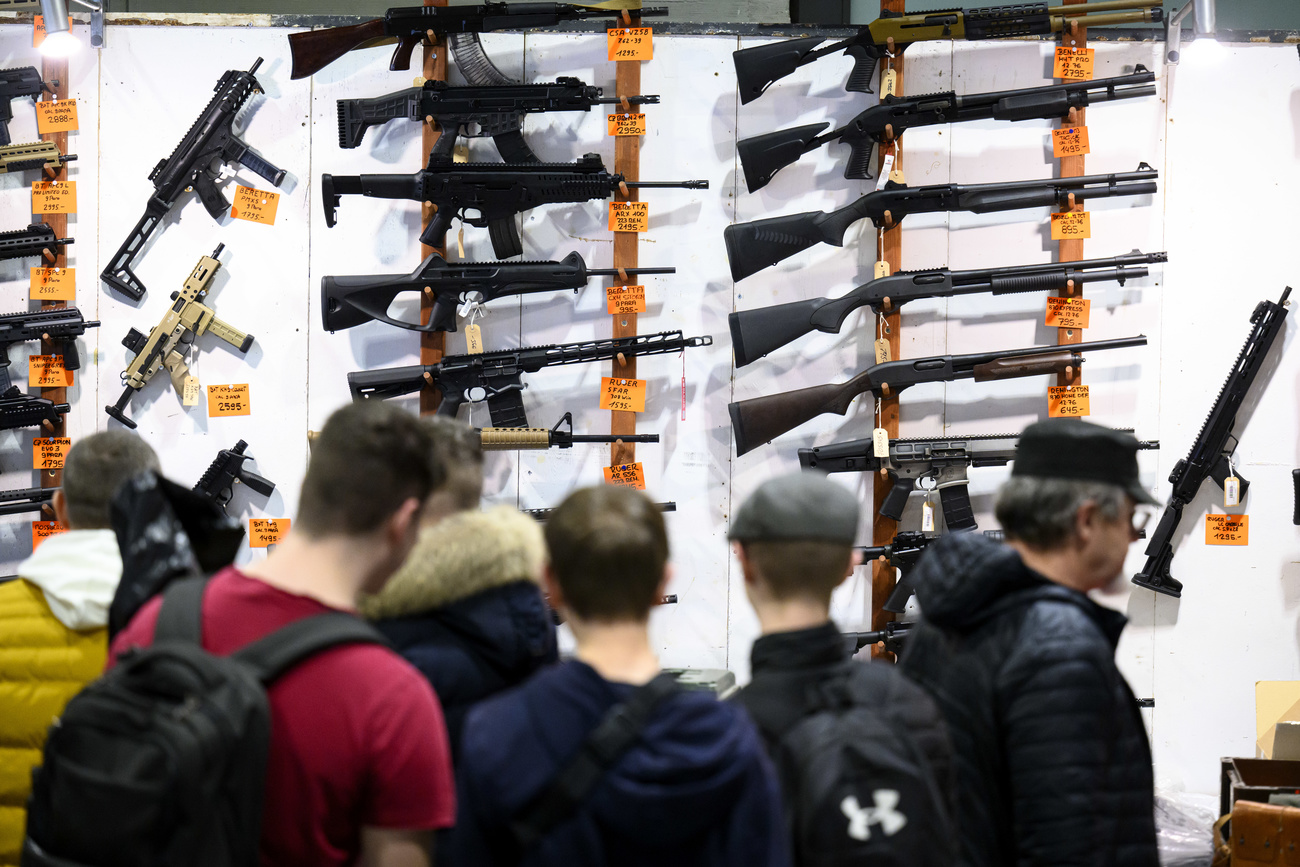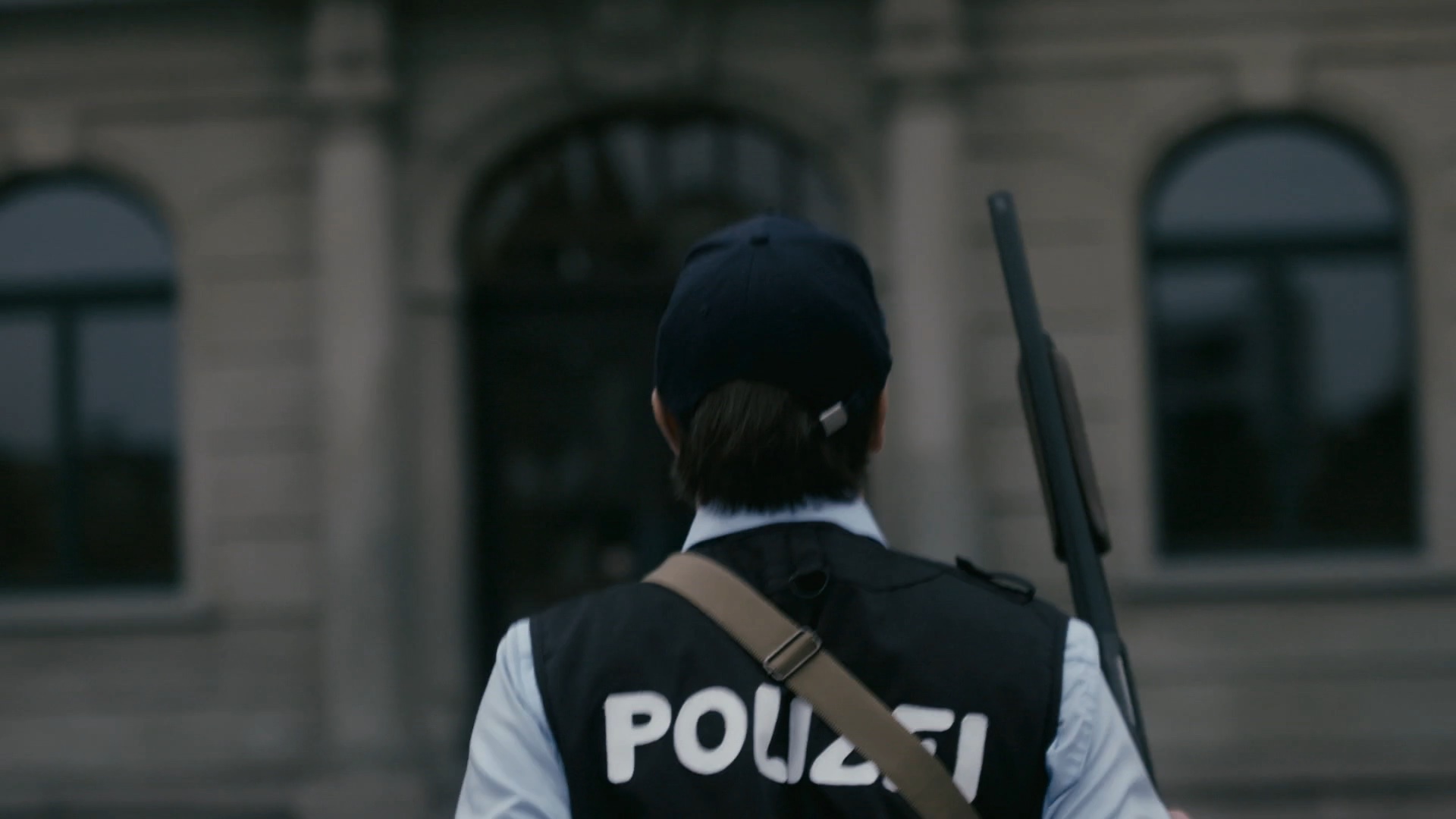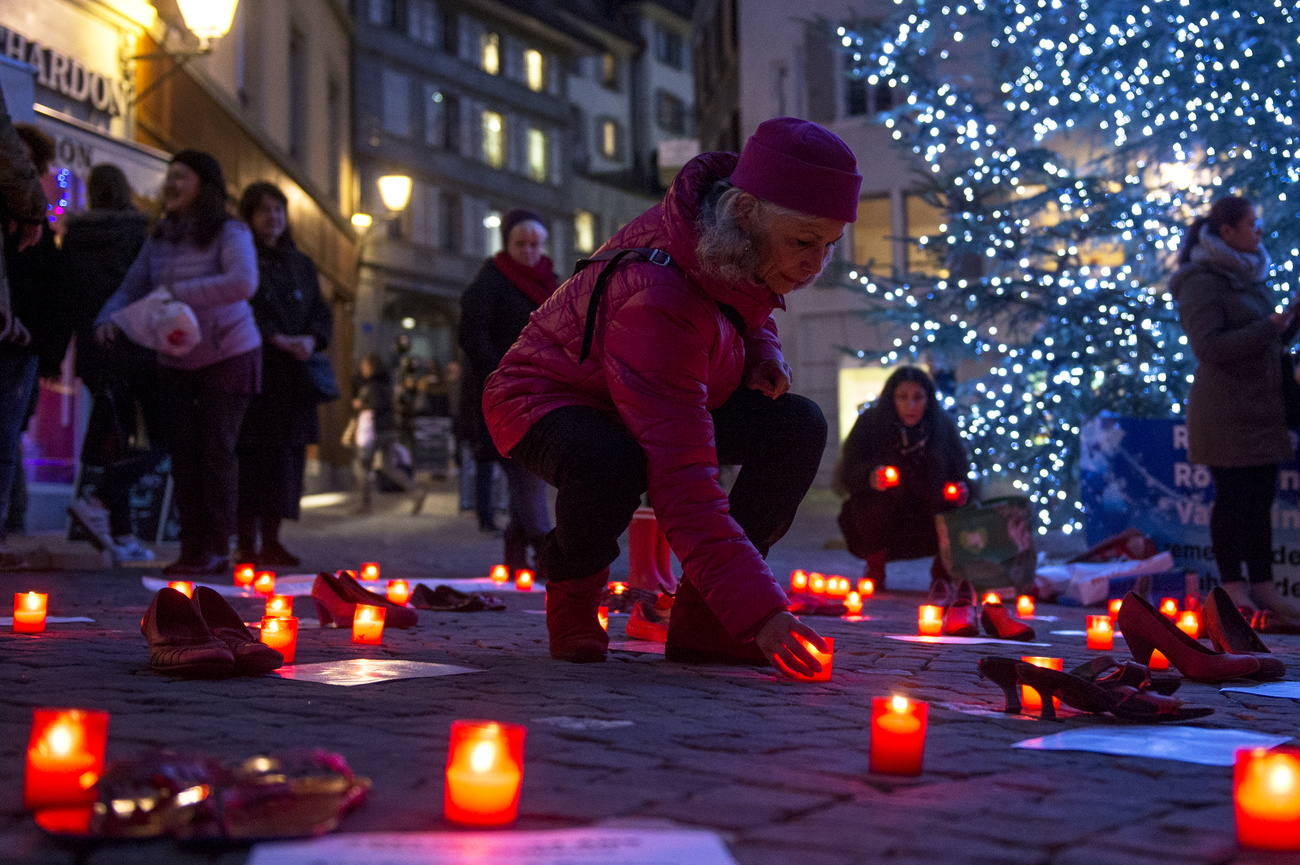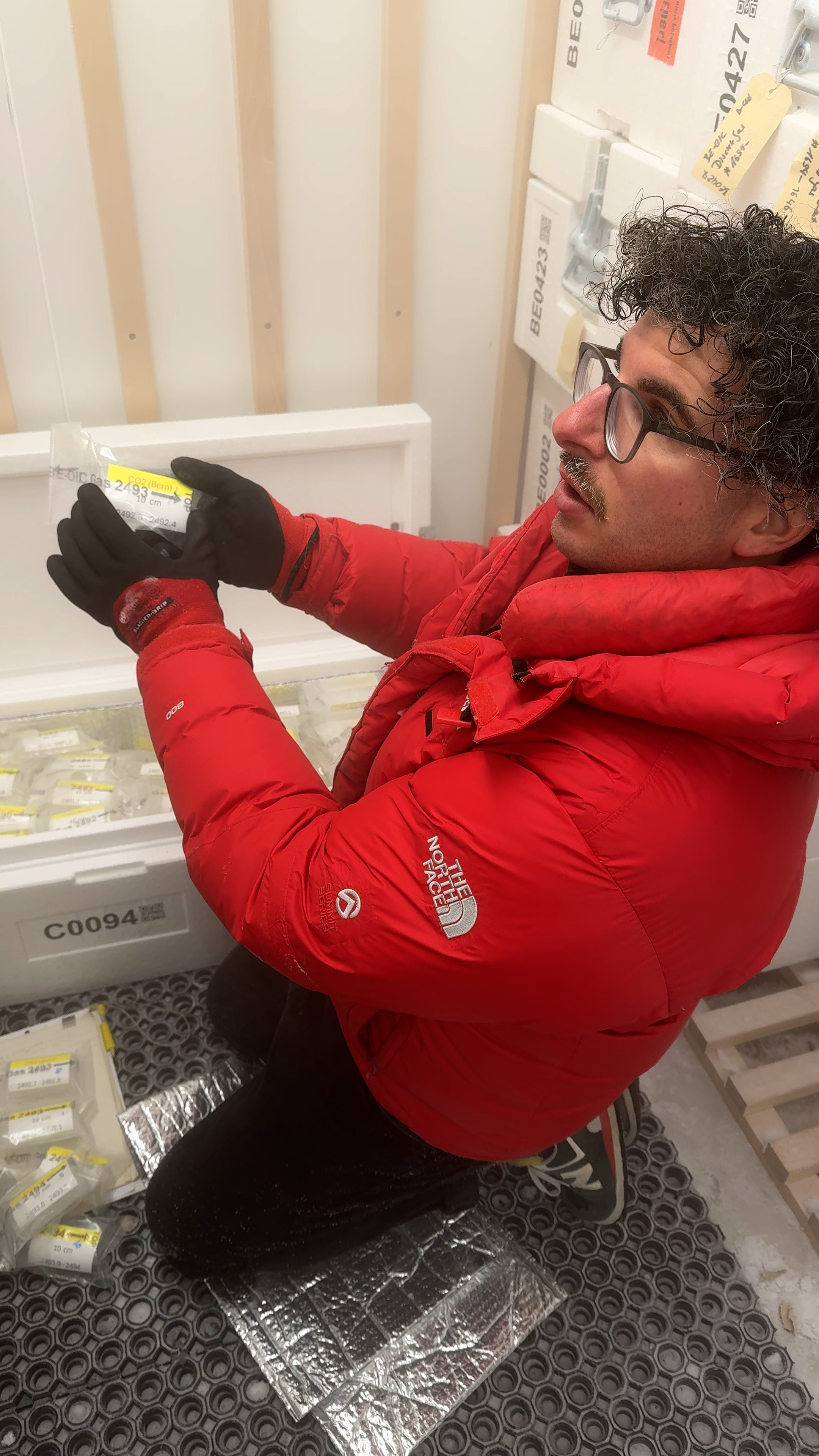
Swiss firearm laws: How Switzerland combines a passion for guns with safety

Switzerland is one of the most heavily armed countries in the world. It is also one of the safest, and shootings such as the recent one in Sion, in the south of the country, are rare. This apparent paradox is due to a weapons culture that is intrinsically different from that of the United States. What's the secret?
“I bought a revolver, a Smith & Wesson 64, and a Colt National Match pistol.” Sébastien, a passionate gun collector and marksman, is all smiles, satisfied with his purchases at the Bourse Internationale aux Armes, a gun fair in Lausanne where he is a regular. His acquisitions reflect aspects of Swiss firearms law, which affects collectors like him.
In the aisles of the Beaulieu conference centre in early December, visitors from all over the country – mostly men but families too – stroll among the roughly 100 stands where they can find gun racks, modern and antique pistols, gleaming cutlery and survival kits.
The atmosphere is friendly, punctuated by regular microphone announcements about the restaurant menu. The security guards, of whom there are many because of the nature of the event, blend into the background discreetly. Visitors can test firearms here and leave with them, provided they have the necessary permits. A handgun sells for several hundred francs on average.
Gun popularity at an all-time high
There are a lot of gun enthusiasts in Switzerland. Some link their passion to a grandfather who taught them to shoot, others to the influence of action films or their military service. The 2023 edition of the Lausanne gun fair, one of the biggest events of its kind, attracted more than 7,000 visitors over three days, an increase of 3% from 2022.
The passion for guns is not on the wane – far from it. During the fair, several hundred permits to buy a weapon were issued by the three police bureaus that had stands there. According to figures provided to SWI swissinfo.ch by the 26 cantonal police forces, more than 45,000 firearms acquisition permits were issued in 2022, the highest number since 2015.
Between 2019 and 2022, the number of permits rose by an average of 10%, with steeper increases in the rural cantons. This increase is difficult to analyse, since permit applications do not have to be justified – a lack of transparency criticised by Marionna Schlatter, a Green Party parliamentarian from Zurich and the author of a motion currently being debated in parliament (see box).
The arms market is still very dynamic, with enthusiasts “continuing to buy, sell and trade arms”, says Marc de Montet, a gunsmith and member of the organising committee of the Lausanne gun fair.
Some analysts have suggested that a worsening sense of securityExternal link linked to the international geopolitical context (the Covid-19 pandemic, war in Ukraine) could increase people’s desire to own arms.
But according to de Montet, the main explanation is the growing popularity of shooting sports, a discipline that accounts for the “vast majority of reasons for purchase” and that is “of increasing interest to women”.
Women account for around 15% of the 130,000 members of the Swiss Shooting Sports Federation, and the number of young markswomen is rising. In 2022, 1,800 girls – or nearly a quarter of a total of 8,100 participants – took a course for young shooters (aged 15 and over). Ten years ago, there were around 1,100 girls out of 7,000 participants (16%).
The number of hunters is estimated at 30,000.
Legislation on firearms acquisitionExternal link in Switzerland is fairly flexible by international standards, especially compared with its neighbours. Anyone over 18 can apply for a permit, with the exception of people with a criminal record and nationals of certain countries listed as sensitive by the authorities.
A first-time applicant is subjected to an investigation. On average, it takes between two and three weeks to obtain the permit.
Since the 2019 reform, the acquisition of high-capacity semi-automatic weapons is only possible for sport shooting and collections. A special permit is required.
But Swiss law is much stricter on carrying weaponsExternal link, a significant difference from the United States. Carrying a weapon in public is only permitted when travelling to a hunting area or shooting range, and ammunition must be carried separately from the weapon.
A permit to carry a firearm is only granted to people who need to do so for professional reasons (security guards, cash-in-transit agents, etc.) or to protect themselves against danger, provided that the danger is “tangible”. Applicants for the permit must pass a weapons-handling test.
‘Switzerland’s DNA’
While Switzerland is a neutral country with a peaceful reputation, it is nevertheless one of the most heavily armed countries in the world, according to Small Arms SurveyExternal link, a Geneva-based organisation that produces the benchmark analyses in the field. According to its latest estimate for 2018, there were more than 2.3 million firearms in circulation nationwide, not counting the 360,000 weapons held by law enforcement agencies.
With almost 28 guns owned by private individuals per 100 inhabitants, Switzerland ranks fourth in western Europe (after Finland, Austria and Norway) and 14th in the world. The record worldwide, by a long way, is held by the United States (more than 120 guns per 100 inhabitants).
“Guns are in a way a part of Switzerland’s DNA,” says gun enthusiast Philippe Aeschlimann, referring to the militia army and compulsory military service for men. Conscripts keep their service weapons at home, and can buy them for a modest sum after their military service, which also helps to explain why many Swiss have a weapon lying dormant in a cupboard.
Information on gun ownership is recorded at cantonal level and is not made public. There is an online platformExternal link, but only law enforcement officers can consult it.
Some people in academic and political circles lament the difficulties involved in producing accurate analysis of the national situation.
Marionna Schlatter, a Green Party lawmaker from Zurich, has launched a parliamentary initiativeExternal link calling for the creation of a central register, which is currently being debated in parliament. “There is virtually no country in Europe that does not have a national arms register,” she says. In her view, such a system would also make it possible to improve security preventively.
After the House of Representatives’ Security Policy Committee approved the initiative, it was rejected in November by its counterpart in the Senate and will be debated again. A majority in the Senate committee argued that the current tools were sufficient.
“A national register would not bring any added value in terms of public safety, but would generate additional administrative work and duplication,” the committee said in a press releaseExternal link.
Schlatter does not understand these arguments: “We know how many cats or cows there are in Switzerland, but we can’t find out how many guns are in circulation?”
Far fewer homicides than in the United States
Despite the wide availability of weapons, relatively few people are killed with firearms in Switzerland. This makes Switzerland a paradox – a model even, often cited abroad, particularly in the US, where gun violence is constantly in the headlines. In 2018, The Daily ShowExternal link, a popular TV programme, devoted a segment to this issue.
According to the Global Health Data ExchangeExternal link, the Swiss gun homicide rate in 2019 was around 0.2 per 100,000 inhabitants, comparable with its European neighbours and 20 times lower than in the United States. The world average is about three homicides per 100,000 people. Firearms were used in 11 homicides and nine attempted homicidesExternal link in Switzerland in 2022.
While in the United States, so-called mass shootings claim thousands of victimsExternal link every year, Switzerland has largely escaped this phenomenon. The last mass shooting on a comparable scale took place in 2001, in the parliament of canton Zug, central Switzerland. ShootingsExternal link do of course occur, but they remain rare.

More
Switzerland’s worst-ever gun massacre
The most recent occurred in December 2023, when a gunman killed two people and wounded one in SionExternal link, the capital of canton Valais, causing uproar in French-speaking Switzerland. The suspect, who was arrested after a car chase, had two weapons registered with the police.
Different contexts
“The presumption that the rate of gun ownership in the population determines the number of homicides involving firearms comes from research carried out in the United States, but it is not applicable to Europe,” says Nora MarkwalderExternal link, a criminologist at the University of St Gallen.
The social and political fabric of a country, particularly regarding high levels of tension or inequalityExternal link, plays a major role. The context in Europe in general and Switzerland in particular is not comparable with that of the United States. “We have a different population make-up, a different structure of gun ownership and a different culture,” she says.
One of the peculiarities of the US is that many people there buy or use firearms for self-defence, which is very rarely the case in Switzerland. In some American states the use of firearms for legitimate defence, especially on private property, is protected by “stand your ground” laws.
The specialists who spoke to SWI swissinfo.ch were unanimous in the view that the relationship the Swiss have with weapons is specific to Switzerland: a mixture of familiarity with guns, training in safety measures, sometimes from an early age, and individual responsibility. “Considering the number of cartridges fired in Switzerland across a range of events, we have extremely few accidents,” says de Montet, a gunsmith who is also a shooter and instructor.
Markwalder is the co-author of a studyExternal link published in 2023 on firearm homicides in five European countries, including Switzerland. Finland emerges as the country with the closest profile to Switzerland’s – it is also heavily armed because of its strong hunting tradition, but the firearm homicide rate is also very low. This research concludes that in European countries, the main determinant of the overall homicide rate is the size and activity of the criminal underworld.
Drama behind closed doors
But there are negative points in Switzerland, too. In contrast with other countries in the study, the use of firearms in Switzerland is widespread and is not limited to banditry, Markwalder says. And certain categories of people, above all women, are at greater risk of falling victim to them, something that tends to fly under the radar, given the generally low crime rate.
“In an international comparison, firearms are used more often in the murder of women and domestic homicide,” she says. Homicide statisticsExternal link since 2009 show that firearms are the most common method used to kill women. Firearms were used in 30.3% of the 350 murders of women compared with 28.5% of the 316 murders of men.
Markwalder says the availability of firearms in the domestic sphere is an incentive. “A firearm is much quicker, easier, more distant and lethal than a bladed weapon, which requires the use of force and closer proximity,” she says. She adds that more than 80% of the incidents in Switzerland in which the perpetrator kills his partner and children before killing himself are committed with a firearm.

More
Why counting femicides is a global issue
It has also been widely documented that the availability of weapons in the home increases the risk of suicide. The Swiss firearm suicide rate is one of the highest in the world (2.5 per 100,000), behind that of Finland (2.7), with the highest being in the United States (7).
Of the 220 deaths caused by firearms in Switzerland in 2022, 200 were suicides – a long-term cause for concern among suicide-prevention groups. “A highly accessible suicide method increases the risk of suicide, and a highly lethal method such as firearms increases the risk of death,” states an information sheetExternal link by the association Stop Suicide.
For Schlatter, there are grounds for action to try to make weapons less accessible. “I’m obviously not targeting sport shooting,” she says. “But I do think that there are a lot of weapons lying around simply because they have been acquired in one way or another, and these represent a latent risk.”
“Obviously, more weapons don’t make Switzerland safer,” she says.
More
Edited by Samuel Jaberg/translated from French by Catherine Hickley/gw

In compliance with the JTI standards
More: SWI swissinfo.ch certified by the Journalism Trust Initiative





















































You can find an overview of ongoing debates with our journalists here . Please join us!
If you want to start a conversation about a topic raised in this article or want to report factual errors, email us at english@swissinfo.ch.